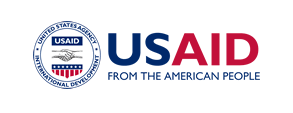The Health Policy Project ended in 2016. Work continued under Health Policy Plus (HP+) until 2022.
NEWS & VIEWS
July 17, 2012
 |
The more people living with HIV and key populations are stigmatized, the less willing individuals are to get tested. As a result, almost 60 percent of people living with HIV around the world are unaware of their HIV-positive status.
|
More than a decade after that assertion, it is difficult to assess the accuracy of that WHO statement. Levels of stigma are rarely measured with accuracy, and a number of small-scale studies have shown that the relationship between increased access to HIV treatment and a reduction in stigma is not always clear. A study of 1,268 adults in Botswana in 2008 found that stigmatizing attitudes had lessened three years after the national program providing universal access to treatment was introduced. However, the study concluded that although improving access to antiretroviral treatment may be a factor in reducing stigma, it does not eliminate stigma altogether and does not lessen the fear of stigma amongst HIV-positive people.
The fact that stigma remains in developed countries such as the United States, where treatment has been widely available for over a decade, also indicates that the relationship between HIV treatment and stigma is not straightforward. As recently as 2009, an estimated 27 percent of Americans would prefer not to work closely with a woman living with HIV. Moreover, preliminary results from the People Living with HIV Stigma Index in 2010, found that 17 percent of respondents living with HIV in the UK had been denied health care and that verbal harassment or assault had been experienced by 21 percent of respondents.
As HIV treatment access has expanded across the globe over the past decade, public health policy experts have begun to examine how HIV programs can better address stigma within the health sector. Numerous examples of successful, small-scale stigma-reduction programs exist[i]-[ii]. Scaling up these efforts to the national level will require routine monitoring of the prevalence of drivers and manifestations of HIV-related stigma and discrimination. With the increasing push for evidence-based decisionmaking in national AIDS programs[iii], national programs must be able to quantitatively evaluate the impact of stigma reduction programs in order to ensure that these programs are included in national AIDS plans.
HIV-related stigma and discrimination in healthcare settings is most often documented as refusing to admit patients because of their sexuality or drug use, delaying or withholding treatment, breaching confidentiality of patients, and making inappropriate comments. As a result, individuals—especially among key populations at higher risk of HIV infection such as sex workers, men who have sex with men, or drug users—are discouraged from accessing health services, adopting preventive health behaviors, and adhering to treatment.
Despite worldwide recognition of the need to address these barriers, there is a gap between action and the resources required to reduce stigma and discrimination, as well as a lack of a global, standardized set of indicators to measure stigma in health facilities. A better understanding of how to measure stigma and its impact on other HIV programs will help policymakers realize the importance of investing in stigma reduction programs and policies.
Through the USAID-funded Health Policy Project (HPP), work is underway to help develop a set of measures to be used by health facilities and health professionals to track stigma reduction programming.
Reaching the global goals set by UNAIDS, the Global Fund, and PEPFAR to mitigate and end AIDS necessitates reaching larger numbers of people living with HIV, as well as those persons most vulnerable to HIV. To do this, countries need to scale up stigma reduction, and to monitor the effectiveness of stigma-reduction efforts, particularly in healthcare settings.
The more people living with HIV and key populations are stigmatized, the less willing individuals are to get tested. As a result, almost 60 percent of people living with HIV around the world are unaware of their HIV-positive status, and many who do know they are HIV-positive are ashamed to disclose their status[iv].
Ron MacInnis will be featured on the panel of the upcoming satellite session, “No ‘Getting to Zero’ without Scale-Up of Stigma Reduction,” at the XIX International AIDS Conference in Washington, D.C., July 22, 2012.
More information about the satellite session available here
[i] Stangl A, Carr D, Brady L, Eckhaus T, Claeson M, Nyblade L. Tackling HIV-Related Stigma and Discrimination in South Asia. Washington, DC: World Bank; 2010.
[ii] Nyblade L, Hong KT, Anh NV, Ogden J, Jain A, Stangl A, et al. Communities Confront HIV Stigma in Viet Nam: Participatory Interventions Reduce HIV-Related Stigma in Two Provinces. Washington, DC; Hanoi, Vietnam: International Center for Research on Women (ICRW); Institute for Social Development Studies (ISDS); 2008.
[iii] Schwartländer, B., J. Stover, T. Hallett, R. Atun, C. Avila, E. Gouws, et al. Towards an improved investment approach for an effective response to HIV/AIDS. Lancet. 2011 Jun 11; 377(9782):2031-41
[iv] UNAIDS World AIDS Day Report 2011 Geneva, Switzerland. 2011.
What's New
- Something to Build On: “Innovation Exchange” Celebrates the Health Policy Project’s Close and a New Beginning
- What Will it Take for Tanzania to Achieve ART Targets and Ensure Long-Term Sustainability of the HIV Response?
- Helping Kenya’s County Leaders Advocate for Increased Health Investments
- HPP Holds Working Meeting on Ensuring Responsible PEPFAR Transitions for Key Populations
- Health Policy Project Celebrates 2016 International Women's Day
- HPP Staff Participate in White House Conference on HIV Stigma Reduction

